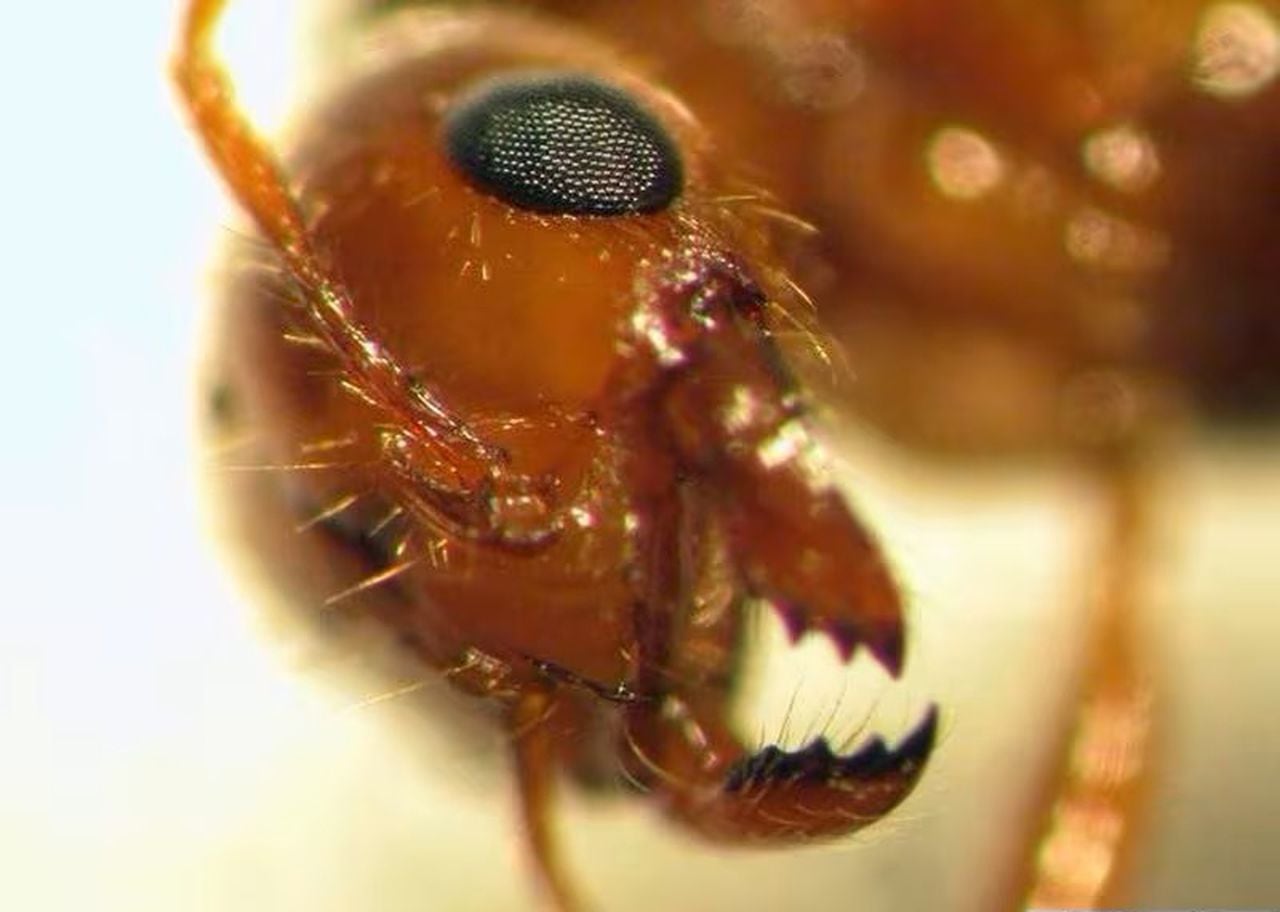Common fire ants hide incredible life that includes flying, floating, tunneling
Look, up in the sky. It’s a bird! It’s a plane! It’s a… fire ant?
OK, fine, fire ant queens are probably way too small to see when they’re 400 feet above the ground, but flying is a vital part of their life cycle.
The red-orange anthills that keep popping up in our backyards and open fields actually started with winged ants meeting hundreds of feet in the air for a quick round of insect speed-dating.
But as abundant as fire ants are, there’s a lot scientists still don’t know about how they reproduce, according to L.C. “Fudd” Graham, an entomologist and researcher at Auburn University and the Alabama Cooperative Extension System.
“We don’t know much about their mating habits because they mate somewhere between 300 and 500 feet in the air,” Graham told AL.com for a previous story. “So we don’t have a good handle on that.”
A red fire ant mandibleBugwood.org
In the previous installments of AL.com’s series on Weird Alabama Animals, we focused on very cool but lesser-known creatures like the rainbow snake, the amphiuma giant salamander and the loggerhead shrike bird that sort of acts like a serial killer.
This time we’re zeroing in on the invasive red fire ant, a species that everyone knows all too well, but that hides a fascinating life cycle that you would never guess to look at these tiny picnic-ruining creatures.
Each fire ant colony gets its start when a winged queen meets up with one or possibly multiple male ants on breeding flights over the tree tops.
It’s not a long-term relationship. The male reproductive ants promptly die after their flight of glory, having checked all the boxes on their evolutionary to-do list. The queen will land, likely in a new area, shed her wings, and begin fervently laying eggs to start a new colony.
She’ll start with a clutch of about a dozen eggs for workers to get the colony started, and she’ll have to feed and care for those first drones herself. When the mature workers establish a colony and begin feeding the queen, she can kick back, relax and lay about 800 eggs a day to keep the colony going.
Queens can live seven years or more, while hundreds of thousands of her offspring go about the business of gathering food, digging tunnels, and keeping up the colony.
The mound that we see above ground is only a small fraction of the colony, which can extend hundreds of feet laterally and up to 10 feet below the surface, depending on the water table.
So if you’re pouring gasoline or grits or anything else on top of the ant mounds to try and kill a colony, you’re not going to have good luck.
“All you’re doing is contaminating the groundwater,” Graham said.
And if you try to kill fire ants with actual fire, it could get a whole lot worse. Graham said he’s often interviewed by the media when someone accidentally starts a fire on their home or property while trying to deal with the ants. That can cause a lot of damage to a home or shed, while probably not harming the any colony much at all.
In those cases, the fire ants have won the battle of wits against the humans.
Really, the only way to kill a colony is to put out bait that the worker ants will carry back to the queen. The poison needs to be strong enough to kill the colony, but not too strong that it kills the workers before they get there.
Ant colonies are extremely resilient otherwise, and can continue on until the queen dies, even when their mounds are disturbed or even completely flooded.
The ants originated in South America, where they had cope with periodic floods. So they developed the ability to form living rafts, where thousands of workers band together to carry the queen and her larvae out of a flooded nest to find a new place to set up shop.
These floating rafts can be dangerous, as the many workers are on high alert to protect the colony. They’ll sting the dickens out of anything or anyone that gets in their way.
The ant “bites” are actually stings, as the ants are believed to have evolved from wasps and other stinging insects. The ants gather up skin with their jaws and then stab with a stinger on their tail and inject a mild venom. Most people suffer only pain and itching from the bites, but a small percentage of the population are allergic to the venom and can suffer severe reactions or even death after being stung.
And finally, the ant is an imported species, one which isn’t really supposed to be here.
The ants were most likely introduced to the United States from South America through cargo shipments at the port of Mobile in the 1930s or 40s. And the invasion continues to spread, as this year, fire ant colonies were discovered for the first time in Europe on the island of Sicily.
So it’s sort of Alabama’s fault that these are in the United States. Our bad. And once they’re established, they’re really hard to get rid of.
Graham said that in Alabama, you can find as many as 80 mounds in an acre. In the ants’ South American native habitat, they’re more likely only five to 10 mounds per acre.
“When the fire ants came, their natural enemies didn’t come with them,” Graham said. “That’s one of the reasons they were able to be so successful here.”
